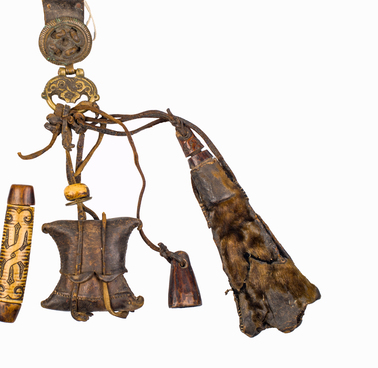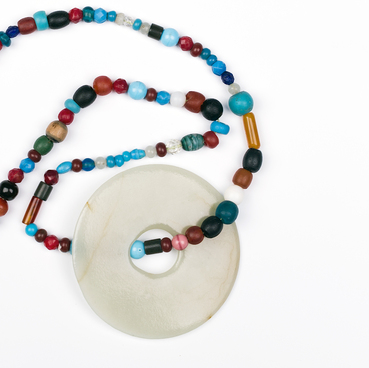The utensils of the indigenous peoples of the Amur region are characterized by a great variety of forms. Osier, birch bark, but most often wood was used for its production. The considerable arsenal of woodworking tools that was found testifies to the long history and excellent development of this type of traditional men’s crafts.
Amur craftsmen mastered various techniques: fretwork, thin-line and multifaceted-incised carving, wood painting, and profiling. The majority of wood products were decorated with the characteristic Amur spiral ribbon pattern.
Ritual objects were especially carefully and abundantly decorated: wedding and shamanic objects. Wedding spoons stand out among household items for their design, shape and ideal proportions. They are distinguished from other items by their elegance.
The spoon is a modern work of wood carving art. It has a flat, elongated spatula and a small recess inside, a thin neck, which passes into a shaped handle with a carved pattern. Lime, larch or cherry wood was used to make such items.
The flat shape of the spoon with a pointed end, long neck and thickened part of the handle follows the tradition of all Amur peoples. The Nanai used ordinary wooden spoons all the time, but they were good only for solid food and porridge; liquid food was sipped from cups.
Ritual articles were used only at the time of the rite. Traditionally, the master decorated these spoons with miniature sculptures of sacred animals. The craftsman could carve a bear, the master of the taiga, or depict a frog, which was especially revered as an inhabitant of both earthly and aquatic space, or, in other words, as an inhabitant of the Middle and Lower Worlds. The frog symbolized motherhood and fertility.
The presented product
was created by Dmitry Onenko, a well-known Amur Nanai wood carver from the
village of Naihin, Nanai district, Khabarovsk Krai. This spoon has participated
in exhibitions in Moscow, St. Petersburg, Veliky Novgorod, Orenburg and Perm.



